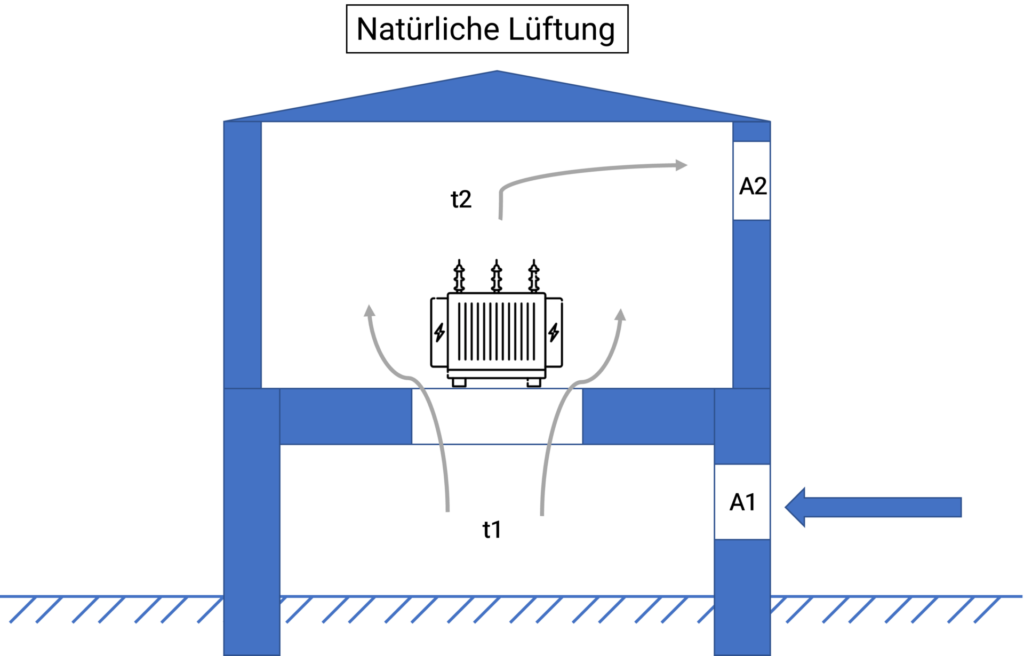Eltrocon opens up new thematic area
A transformer generates power losses during operation, which must be dissipated as heat to the environment. This heat causes the surrounding air to heat up. To prevent unacceptable overheating of the transformer, the heated air must be dissipated. One way of achieving this is “natural ventilation”, in which the air movement is created by convection, i.e. by the heated air rising.
To ensure sufficient air movement and thus effective cooling, transformers operated in a closed transformer box must have sufficiently dimensioned ventilation openings both below and above the transformer.
The basic rule is: the larger the ventilation openings, the greater the air exchange, the lower the heating of the cooling air and the better the cooling effect for the transformer.
According to DIN EN 60076-1, the temperature of the ambient air must not exceed certain limits during operation of a transformer with rated power. These limits are as following: maximum 40°C, daily average 30°C and yearly average 20°C. In addition, the air heating caused by the transformer losses should not exceed 15°C during natural ventilation and the flow velocity of the cooling air should not exceed 3 m/s, as recommended in the technical literature.

It would be possible to calculate the dimensions and location of the ventilation openings to ensure that these limits are not exceeded. However, since the spatial conditions have already been determined, the reverse approach can be taken instead. In this case, the heating of the cooling airand flow velocity are calculated based on the specific spatial conditions. The air heating calculations are based on the specified room geometry and require information such as the temperature when the air enters the transformer box, the temperature when it leaves the transformer box, the areas of the supply air openings and exhaust air openings, and the height from the center of the transformer to the average height of the exhaust air opening.
If structural conditions result in unfeasible opening cross-sections or insufficient draft height, artificial ventilation must be provided for the transformer cell.